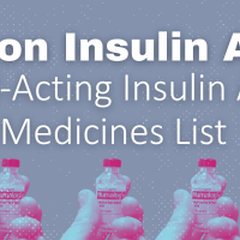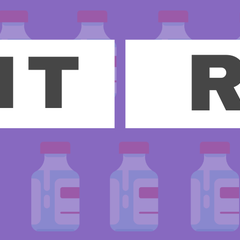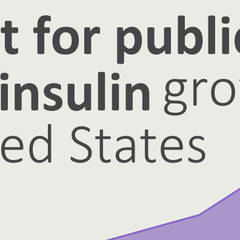
Opinion: The insulin crisis is far from over
16 Oct 2024, 6:08 p.m. in #insulin4all USA, News & Statements by Arden Parrish
This blog post was first published in the Hartford Courant on September 15 2024 by Arden Parrish under the title: Opinion: The insulin crisis is far from over. Public pharma could be the solution. On September 17th, the Connecticut #insulin4all Chapter, T1International, and the Yale Global Health Justice Partnership hosted a community conversation about public pharma at Yale Law School. Over 120 people joined Arden to hear from patient advocates, legislators, and health services researchers about how public pharma can help address the problems of inaccessibility. The recording can be found here.
You can hardly turn on the TV these days without hearing about how politicians have won the war against “Big Pharma” and made insulin affordable. Both sides of the aisle are rushing to claim credit for the $35 copay cap on insulin, which covers seniors on Medicare. But as lawmakers celebrate their victory, patients of all ages continue to suffer.
As the leader of Connecticut’s #insulin4all chapter, I’ve met countless patients who have struggled to afford their insulin. Whenever I speak with a chapter member who’s rationing—taking less than their recommended dose—I’m transported back to my 15-year-old self, skipping lunch every day to conserve each precious drop of insulin while my family was uninsured. I’ll never forget the feeling of leaving the pharmacy empty-handed, unable to pay for the medication I needed to survive.
In January of this year, I once again walked away from the pharmacy without my insulin. This time, it wasn’t because I couldn’t afford the copay—it was because there was no insulin in stock. Weeks turned into months, and I still couldn’t fill my prescription. In March, down to only a few vials of Novolog, I could see no end in sight to the shortage that had now spread across the country. So I took a dangerous gamble: I loaded my pump with insulin from an expired vial.
Two days later, I awoke in the middle of the night in excruciating pain. I was nauseous, dehydrated, and confused. I knew instantly that I was in Diabetic Ketoacidosis (DKA), a life-threatening condition that occurs when the body goes too long without insulin. I had no choice but to go to the hospital, where doctors rushed to stabilize my condition.
The week after my DKA episode, Eli Lilly, one of the “big three” global insulin manufacturers (along with Sanofi and Novo Nordisk), officially announced a shortage on its Humalog and Lispro insulins. The realities of the shortage were undeniable. Some patients drove hours to find pharmacies that had their insulin in stock; others turned to rationing and, like myself, faced dire consequences. Here in Connecticut, I was unable to get a single vial of Novolog until July.
Last year, Eli Lilly received a tidal wave of positive press when it committed to lowering the list prices on its insulin products—which, incidentally, enabled it to save millions of dollars under a new Medicaid rule. But what is the point of $35 insulin if patients can’t actually get their hands on it? The time has come for a meaningful, sustainable alternative. Public pharma—placing the manufacturing, distribution, and pricing of prescription drugs like insulin into public, rather than corporate, hands—offers a solution to this growing crisis.
States that invest in public manufacturing of insulin and other medicines are investing in the future of their citizens. The demand for insulin, which is as essential as water to a person with Type 1 Diabetes, will only increase in the coming years, with rates of diabetes in young US populations predicted to rise dramatically. In 2021, an estimated 1.3 million Americans rationed their insulin; this number, too, will continue to rise unless urgent action is taken.
Public production of insulin won’t just save lives: it will also save money for Connecticut. More accessible insulin means fewer patients going into DKA, which costs an average of $30,000 per ER visit. It also means a reduction of long-term complications, such as amputations, kidney failure, and vision damage. In 2019, taxpayer-funded programs like Medicare and Medicaid spent over $25 billion on insulin. If patients were able to buy their medicine at a price close to the manufacturing cost, a mere $6-$10 per vial, it would improve not only their lives, but the economy of our state.
Public manufacturing has already been implemented successfully by several states. Massachusetts currently develops, manufactures, and markets biologics through MassBiologics. The California Department of Public Health produces BabyBIG, a drug used to treat infant botulism. Public manufacturing initiatives targeting insulin are underway in Washington, Maine, Michigan, Illinois, and California. Across the country, patients and lawmakers alike are realizing that we don’t have to accept a system that puts patients’ lives at risk and costs taxpayers millions of dollars annually. And here in Connecticut, we have the opportunity to be at the forefront of the progress in our healthcare system that is so desperately overdue.
Arden Parrish lives with Type 1 Diabetes and serves as Chapter Leader of the Connecticut #insulin4all Chapter.









